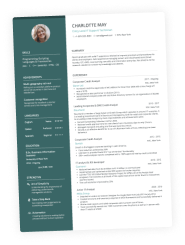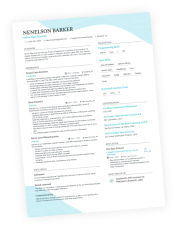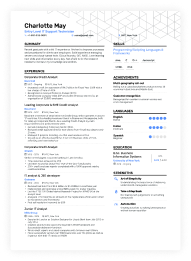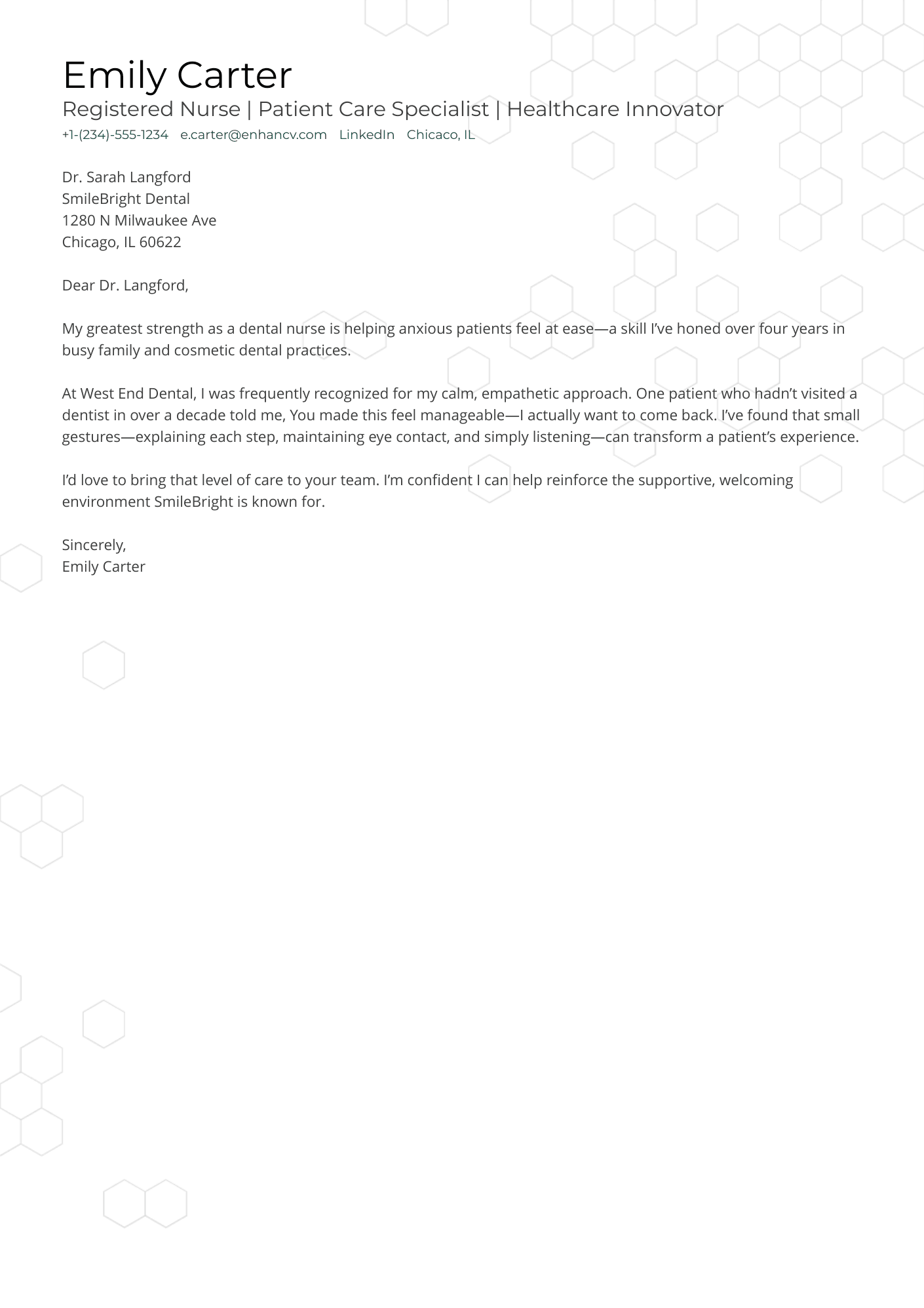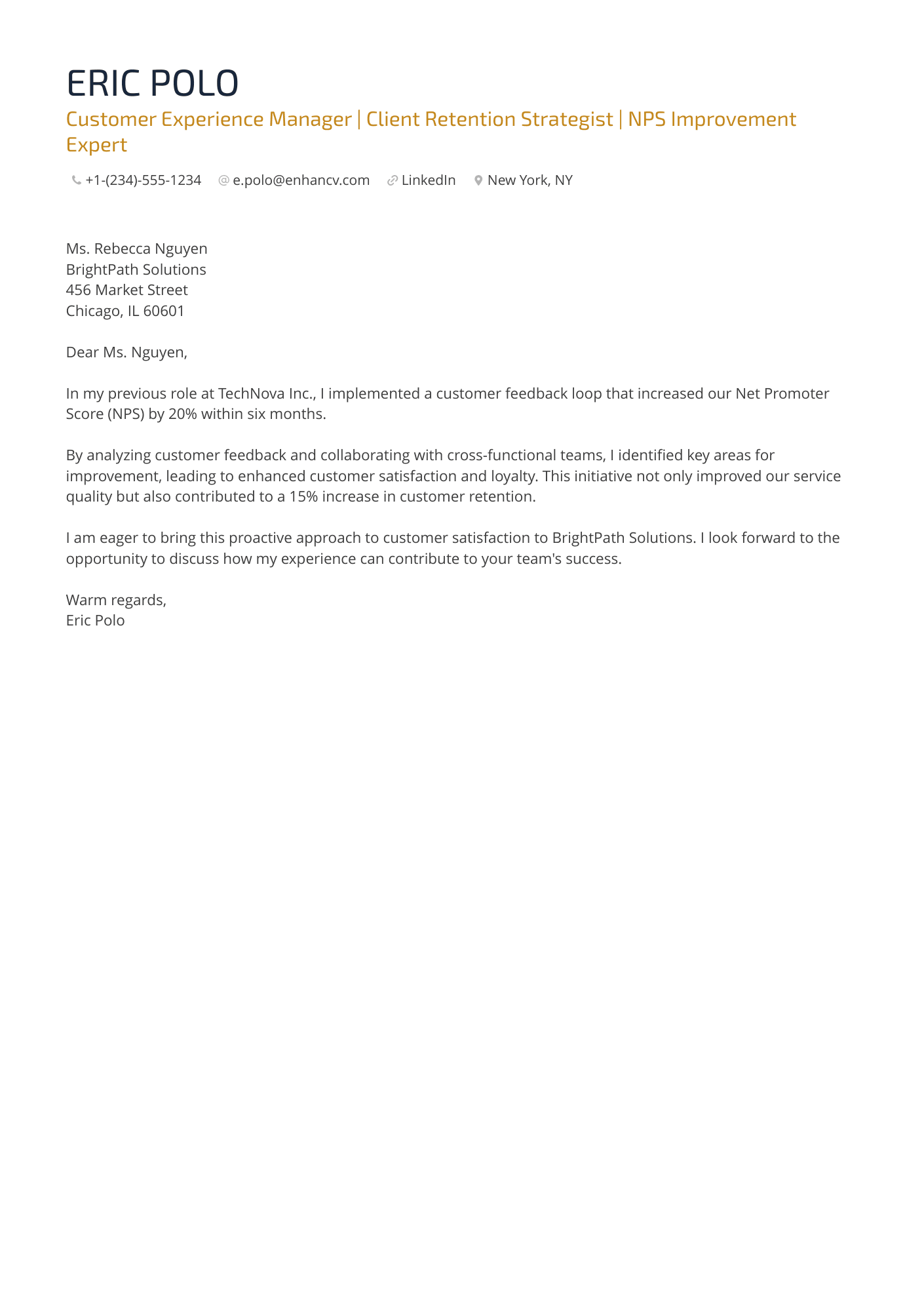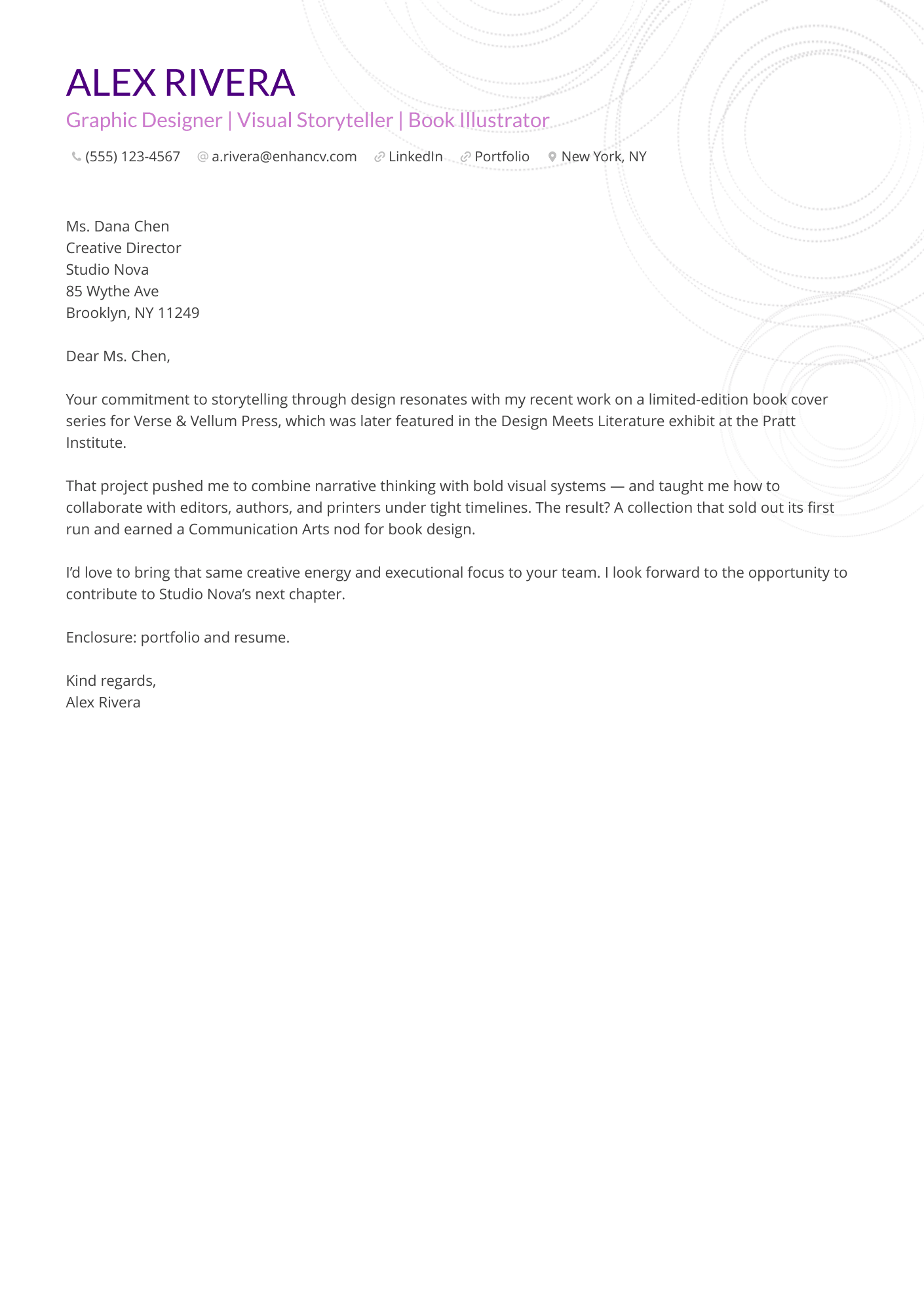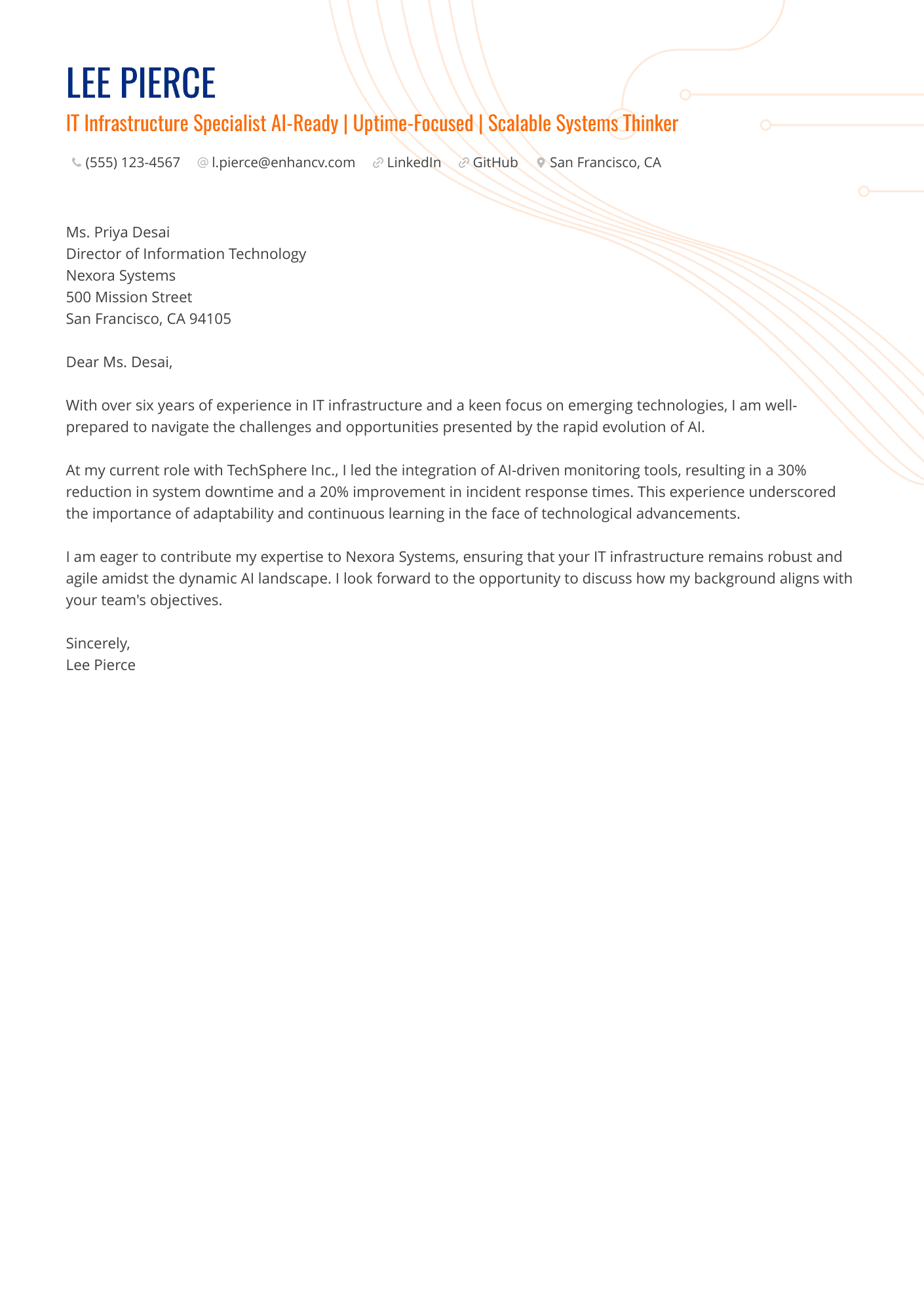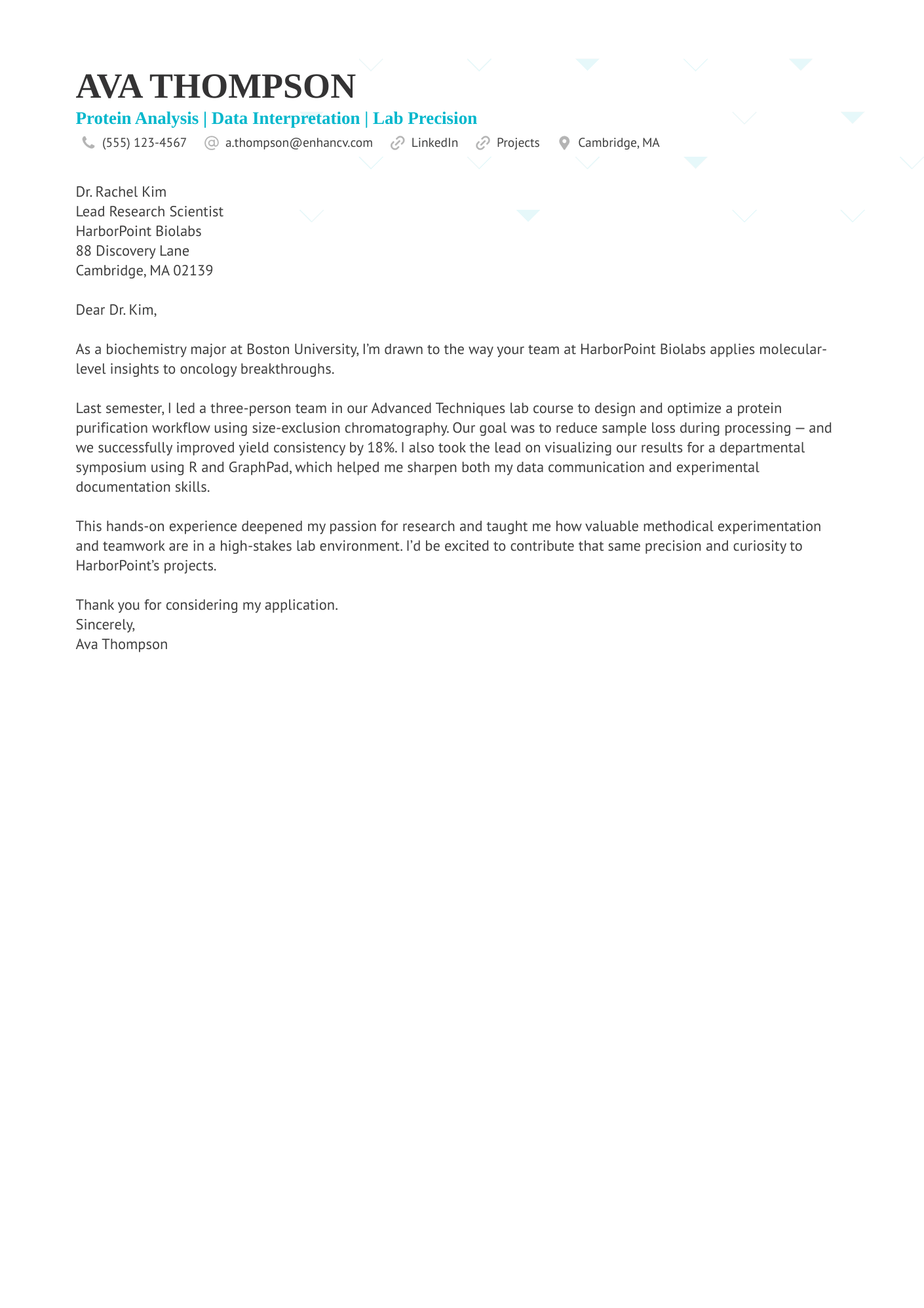Hiring managers are scanning dozens—sometimes hundreds—of applications per role. A traditional, full-length cover letter may go unread, especially if it’s packed with generic language or recycled resume lines.
That’s why a shorter cover letter often signals a more thoughtful, tailored approach.
Short cover letters are faster to write, easier to customize, and far more likely to be read in full. They get to the point quickly, highlighting one key strength or achievement that makes you a strong match for the role—without overwhelming the reader.
At Enhancv, as a team of certified professional resume writers (CPRWs), we’re prepared for all kinds of application materials, regardless of the length.
We created this guide with everything you need to master the art of the short cover letter: real-world examples, expert writing tips, formatting best practices, and a plug-and-play template you can personalize in minutes.
Let’s dive in.
Key takeaways
- A short cover letter should be between 100 and 200 words—brief, but still personal and impactful.
- Focus on one key strength or achievement that is relevant to the job.
- Keep your tone aligned with the job posting and company culture.
- Use results or storytelling to create a memorable message.
- Avoid repeating your resume or using vague phrases.
- A strong closing and clear call to action can make you stand out.
What’s a cover letter?
A cover letter is a one-page document that you submit alongside your resume when applying for a job. Unlike a resume that’s all about structure and quantifiable achievements, a cover letter gives you more freedom and flexibility to show who you are as a person.
While a resume is a non-negotiable part of your application, the cover letter may or may not be required. Still, we’d always advise you to include one if you really want to make an impression.
Here’s what a cover letter can do:
- Tell your story—in a tone that reflects your personality.
- Show enthusiasm for the job and company.
- Connect the dots between your background and the job requirements.
- Clarify any gaps or changes in your career path, such as switching industries or returning to work.
A traditional cover letter vs. a short cover letter
You might think a short cover letter is just a shorter version of the general one. This is only partly true. Thе strategy is also different—the short cover letter focuses on one or two key strengths, and is easier to personalize for each role.
So before we jump into examples, let’s compare traditional and short cover letters side by side.
Here’s how they stack up:
| Traditional cover letter | Short cover letter |
|---|---|
| 250-400 words | 100–200 words |
| Sheds light on different aspects of your professional story | Adds context or highlights one specific strength |
| Written in paragraphs, more detailed | Brief and skimmable—just a few strong lines or one short paragraph |
| Tries to tell your full story | Targets one key value to the role |
| Takes longer to write and edit | Easier to tailor for each job |
Don’t think of a short cover letter solely as a way to respond to the cliche of “a fast-paced work environment.” Instead, treat it as a chance to practice the art of introducing yourself concisely and with impact.
It’s a skill—and one you can absolutely master. Let’s take a look at some real-world short cover letter samples to understand what makes them work.
Short cover letter examples
The following examples address specific industry expectations, tone, and skills. Clicking on either of them will take you to our Cover Letter Builder where you can adapt them to your needs or start your document from scratch.
This dental nurse cover letter creates a strong emotional hook through storytelling.
And here’s a customer service cover letter that underlines the candidate’s measurable success and reflects their tactical and strategic abilities.
This graphic designer cover letter shows the versatility and impact of an artist.
You might think IT specialists don’t need a cover letter, but reconsider. A well-written one can actually boost your chances in such a competitive environment.
This intern cover letter is strong and elevates an application with limited experience. The key? Talking passionately about projects that made a real impact.
PRO TIP
If you want a quick cover letter creation, try our Cover Letter Generator. Just feed it your resume and your desired job description, and let it work its magic. ✨
How to write a short cover letter
Writing a short cover letter shares a lot of common ground with writing a traditional cover letter. You still need to follow the established structure, which includes:
A header
Your cover letter should begin with a simple but complete header—including your full name, email, phone number, city, and the date. It’s easiest if you copy-paste your resume header.
Beneath that, include the hiring manager’s name, their title (if known), the company name, and address. This format keeps things professional and makes it easy for the recipient to follow up.
Adjust your header when sending by email
If you're sending your short cover letter in the body of an email—rather than as a separate attachment—there's no need to include a full letterhead at the top. Instead, start directly with the greeting and move your contact details to the bottom, beneath your sign-off.
This gives the hiring manager everything they need to reach you. Just be sure your subject line is clear (e.g., Application: [Job Title] – [Your Name]) and your resume is attached as a PDF.
A greeting
Start your letter with a professional greeting. Ideally, address the hiring manager by name—for example, “Dear Ms. Johnson” This personalized salutation shows attentiveness.
To find the specific person you should address your cover letter to, try one of the following strategies: look up the company’s website or LinkedIn, check the job listing carefully, or call or email the company if appropriate.
If you can’t find the name, don’t worry. A clear title like “Dear Hiring Manager” is perfectly acceptable and still keeps your tone respectful. However, skip the generic “To whom it may concern” and the old-fashioned “Dear Sir/Madam.”
A hook/intro
Your opening paragraph should offer a compelling reason to keep reading. Skip the generic “I’m-excited-to-apply” rhetoric, and instantly hook the reader by addressing a challenge they’re facing, or a notable achievement of yours.
Try to show a connection to the company—like a shared value or a recent project they launched. A mutual acquaintance is a strong asset and a real boost for your credibility, so don’t hesitate to name-drop.
Body
This is the heart of your letter. While it will be shorter than a traditional one—and you won’t be able to list as many achievements—it can still feel substantial and make your application memorable.
Focus on one key accomplishment that directly relates to the role you’re pursuing. You might highlight a results-driven success with clear metrics, or tell a brief story that shows your influence on colleagues, processes, or outcomes.
Either way, this section should feel more personal than your resume. Think of it this way: your resume shows why they should hire you—your cover letter shows who they’d be hiring.
Closing/call to action
The end of your cover letter leaves the most lasting impression—so make it count. Rather than repeating what you’ve already said, use this space to confidently express your interest in contributing to the organization.
This is where you shift from explaining why you’re qualified to showing that you’re ready to take the next step. A natural, forward-looking call to action—like “I’d love to speak further about how I can support your team’s goals”—helps create momentum and shows the recruiter you’re prepared and enthusiastic about moving ahead.
Sign-off
Finally, close your letter with a formal sign-off, such as “Sincerely” or “Best regards”, followed by your full name. If sending your cover letter directly via email, include your contact details below your name. This maintains a polished tone and ensures the recipient has all the necessary information to follow up.
In addition to the essential cover letter sections, let’s look at some formatting tips to make sure your cover letter looks as good as it reads.
Formatting best practices
- Length: Aim for 125–175 words to maintain brevity and focus.
- Font: Use professional fonts like Arial, Calibri, or Rubik in 10–12 pt size.
- Spacing: Employ single spacing within paragraphs and add a blank line between sections.
- Alignment: Left-align all text for readability.
- Margins: Set margins between 0.5" and 1" on all sides.
- File format: Save and send your cover letter as a PDF to preserve formatting.
- File naming: Use a clear and professional file name, such as "FirstName_LastName_CoverLetter.pdf.
Simple short cover letter template
If you’re short on time or just need a quick starting point, this template is designed for fast customization and clear impact. It follows all the best practices for short cover letters—clean structure, confident tone, and a focus on one relevant strength or achievement.
Just fill in the placeholders to match your background and the job you're applying for:
[Your Full Name]
[Your Email] | [Your Phone Number] | [Your City, State]
[Today’s Date]
[Hiring Manager’s Name]
[Their Job Title, if known]
[Company Name]
[Company Address]
[City, State ZIP]
Dear [Hiring Manager’s Name],
With [X years] of experience in [industry/field] and a strong background in [key skill or focus], I’ve developed [specific strength or achievement] that directly supports your [team’s goals / company mission].
In my previous role at [Previous Company Name], I [describe a relevant accomplishment with brief metric or outcome, e.g., “streamlined onboarding processes, reducing setup time by 30%”]. I’d love to bring that same impact to [Company Name] and contribute to your continued success.
I’d welcome the chance to speak more about how I can support your team. Thank you for your time and consideration.
Sincerely,
[Your Full Name]
Short cover letter vs. e-note
While both short cover letters and e-notes aim to introduce you and highlight your value, they differ in format and tone.
A (short) cover letter is still the classic choice—more formal, usually structured like a traditional business letter, and attached as a separate PDF or document.
E-notes, on the other hand, are even shorter, less formal, and designed for today’s fast-paced, mobile-first world. They're written directly in the body of your email, making them quicker to read and more conversational in tone.
If you're applying via email or want to keep things ultra-lean, an e-note may be the better fit.
Tips to make your short cover letter stand out
Even a 150-word cover letter can pack a punch—if you’re intentional with every line. These tips will help you write a short cover letter that feels personal, professional, and hard to ignore:
Personalize with the company name and role
Generic cover letters get skipped. Make sure you mention the company and position by name—this instantly signals that you’ve taken time to tailor your message.
PRO TIP
Don’t confuse a generic cover letter with a general one. A general cover letter can be useful—especially when applying to multiple positions at once. Think of it as a flexible base you can tailor to fit different roles.
Use impact language or results where possible
Short cover letters leave no room for fluff. Use strong verbs and back up your achievements with numbers or clear outcomes (e.g., “reduced wait time by 20%” or “boosted engagement by 30%”).
Of course, for some roles, numbers aren’t the most telling factor. But you should still use powerful words to describe yourself in your application.
Mirror the tone of the job posting
If the listing is playful and energetic, your cover letter can match that tone. If it’s formal and precise, keep your tone polished. This shows you understand the company culture.
Mention why you’re excited about the company or position
A little enthusiasm goes a long way. Briefly share what draws you to the role or what aligns with your values—it helps build a connection.
Don’t over-explain—let your resume do the heavy lifting
Your cover letter isn’t a summary of your resume. And when you’re writing a short one, it’s even more important to let it serve as an addition—not a repetition.
Focus on delivering value through one thoughtfully chosen aspect of your experience or personality. Think of it as the highlight reel, not the full story.
A one-page resume, a short cover letter… sometimes it feels like we’re trying to compress our entire professional identity into the smallest space possible. But here’s the upside: expressing yourself in short form isn’t just reserved for short story masters or minimalist writers.
Learning to say more with less is a skill—and one that’s incredibly valuable in today’s job market. A short cover letter challenges you to clarify what really matters, to lead with confidence, and to connect quickly. It’s not about cutting corners. It’s about cutting through the noise.
Author’s take
Common mistakes to avoid
Even a short cover letter can go off track if you’re not careful. These are some of the most common pitfalls that can weaken your message—and how to avoid them to keep your letter focused, personal, and effective.
Writing a long letter and calling it “short”
If your letter creeps past 200 words, it’s no longer short—and you lose the key advantage of being concise and skimmable. Be ruthless in your editing. Focus on one clear message and cut anything that repeats, over-explains, or belongs on your resume.
Rehashing the resume
Your cover letter should complement your resume, not copy it. Instead of listing your responsibilities or job titles, use the space to add context—like how you approached a challenge, why an achievement mattered, or what motivates you to do this kind of work.
Using tired phrasings
Vague phrases like “hard-working” or “team player” don’t carry much weight unless you back them up with a real example. Instead of telling, show—even a quick reference to how you contributed in a group or handled a conflict will leave a stronger impression.
Apologizing for lack of experience
Hiring managers aren’t looking for apologies—they’re looking for potential. If you’re early in your career or shifting fields, focus on transferable skills, curiosity, and motivation. Lead with confidence, not disclaimers.
Forgetting a call to action
As concise as it is, don’t just end with “Thanks.” Instead, invite the next step—express interest in meeting, contributing to the team, or learning more about the role. It’s a small touch that signals confidence and professionalism.
FAQs about short cover letters
Still unsure about how short your cover letter should be, or whether it’s the right approach for your application? These quick answers will help clear up common doubts and guide you through the finer details.
What is the shortest a cover letter should be?
A cover letter should be no shorter than 100–120 words. Anything less might come off as rushed or lacking effort. Aim for 150-200 words to keep it brief but still meaningful.
How do I write a simple cover letter?
Start with a clear greeting, mention the role you’re applying for, highlight one relevant strength or achievement, and close with a confident call to action. Keep the tone professional, but don’t be afraid to show a bit of personality.
Can employers tell if you use ChatGPT for your cover letter?
You can use AI to create your resume and your cover letter—but within reason. Make sure you don’t just copy-paste content. Customize, add real experience, and make it sound like you, so that it’ll read as a well-written, thoughtful letter.
How do I shorten a cover letter?
To turn your cover letter into a short one, trim anything that repeats your resume, cut down on buzzwords, and focus on just one key message or story. Read it out loud—if a sentence doesn’t add value, it’s safe to cut.
Conclusion
Short cover letters prove that less can truly be more. When done right, they show your strengths in a way that’s respectful of the recruiter’s time—while still leaving a strong impression.
Whether you’re applying for your first internship or pivoting careers, a short, tailored message can set you apart. Use the examples and template above as your starting point, and make it your own.
Make one that's truly you.


